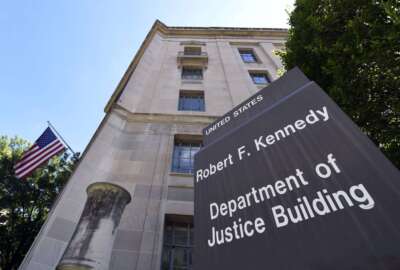“We really want the business to be a part of that full lifecycle. You need to figure out what are the roles and responsibilities for not just your systems integrator, not just your traditional CIO functions, but how do you bring the business in, hold them accountable for showing up and being part of every step of that SDLC,”
- Jonathan Edge, a director at KPMG
Jonathan Edge
Director, KPMG
“It's about rethinking what is technology to that business partner to enable them to do things better, faster, cheaper. That’s important for the business to want good technology and it's important for the CIO to be able to develop good technology,”
- Jonathan Edge, a director at KPMG
Jonathan Edge
Director, KPMG
Over the last 20 years, the role of the agency chief information officer has evolved many times over. At first, CIOs were stuck in the back office, watching blinking lights of servers and worrying about email and printers.
Slowly, they emerged into new roles, focused on strategy and operations, sitting on both sides of the fence.
Today, CIOs are evolving once again. They are leaders, strategists and, maybe most importantly, key decision makers in the mission areas.
The Federal CIO Council’s 2021 handbook outlined the roles of technology leaders across seven key areas, including leadership and accountability, strategic planning, investment management and workforce.
In the short time since the council released this handbook, the role of the CIO evolved again. The pandemic reminded all of us just how critical IT is in serving citizens, protecting the nation and everything in between.
Jonathan Edge, a director at KPMG, said CIOs need to create a symbiotic relationship with the mission owners and other CXOs to drive digital transformation.
“CIOs, generally, are very good at what they do from a systems integration perspective. They know how to do development. They know how to do testing, configuration management, DevSecOps, orchestrate agile waterfall, or whatever the mechanism that the system development lifecycle might be. Those are absolutely what we see in in this federal space and industry more broadly,” Edge said on Modern Government: Mission Digital Transformation. “So if CIOs are really strong at these things, they also have to be strong at business process reengineering. They have to be strong at creating a technology that enables value management within their organization. They have to consider user adoption and change management strategies, human centered design and the experience of leveraging that technology.”
To create a complete team that will move agency digital transformation efforts forward more quickly, CIOs need to consider the concept of business integrators. Like a systems integrator, business integrators bring together disparate mission processes to drive better results.
Edge said this means bringing in lean principles, initiating change management, customer experience and user centered design principles as part of the software development lifecycle.
“We’re advocating for the cadence of agile where you certainly are taking strong requirements and you’re creating a requirements traceability matrix. You’re hoping that your development is a part of that,” he said. “We really want the business to be a part of that full lifecycle. You need to figure out what the roles and responsibilities are for not just your systems integrator, not just your traditional CIO functions, but how do you bring the business in, hold them accountable for showing up and being part of every step of that SDLC.”
Enable business partners
Edge added that CIOs using this process will create an orchestrated relationship with their business partners, who come to the effort with people and resources to help support the technology transformation.
But the CIOs still need to take a leadership role to enable the business partners to solve problems.
“It’s about rethinking what is technology to that business partner to enable them to do things better, faster, cheaper. It’s important for the business to want good technology and it’s important for the CIO to be able to develop good technology,” Edge said. “I’m not advocating for the CIO funding for all these things. I’m not advocating for the CIO to a mandate these things. But I do think there is a natural relationship where if the CIO says this is what’s needed for success to truly enable their organization to be better, faster, cheaper. The business should come with open arms and open hands. You want your business to really evaluate what this technology can do for them, and the CIO needs to enable that as well.”
Edge said enterprise resource planning (ERP) modernization efforts are good projects to use business integrators because of how complex the initiatives tend to be. This becomes even more important as agencies move toward low code, no code platforms, robotics process automation and other technologies because the business owners can impact the systems more easily.
“These ERP modernization type activities are end-to-end from procure-to-pay, order-to-cash and budget-to-execute. It spans the spectrum of business processes and that integration between business process and technology is absolutely where you would apply business integration,” Edge said. “You would really evaluate what are the skill sets that you have, and how are you orchestrating these skill sets across the systems development lifecycle to enable the best of that technology? What I don’t want to see is for any of these ERPs, because the technology has advanced, of course, lifted and shifted. You have to maximize the value of the ERP, and then of course, you still layer on low code platforms, robotic process automation, and integrate business and mission components to your core CIO functions.”
Copyright
© 2024 Federal News Network. All rights reserved. This website is not intended for users located within the European Economic Area.








